Posté par Pascale Dubus, le 25 janvier 2015;
- Date limite : 1er février 2015
 La Villa I Tatti de Florence propose la bourse David et Julie Tobey d’une durée de trois mois pour encourager la recherche sur les dessins, les gravures et les manuscrits illustrés de la Renaissance italienne. La Villa I Tatti de Florence propose la bourse David et Julie Tobey d’une durée de trois mois pour encourager la recherche sur les dessins, les gravures et les manuscrits illustrés de la Renaissance italienne.
Les chercheurs doivent avoir une solide expérience des études de la Renaissance italienne. Ils doivent être doctorants (avec un sujet de thèse approuvé) ou titulaires d’un doctorat. La priorité sera accordée aux candidats qui ont obtenu leur doctorat après 2004. Les candidats doivent connaître l’anglais ou l’italien et être en mesure de comprendre les deux langues. Les projets doivent concerner la Renaissance italienne, généralement définie . . . → En lire plus
Posté par Sarah Feron, le 23 janvier 2015;
3e séance du séminaire D’époque ou de style, d’ici ou d’ailleurs : le passé recomposé dans les intérieurs et les musées, par Renata Ago (Université La Sapienza, Rome)
5 février 2015 – 12h-14h Galerie Colbert Salle Jullian Institut national d’histoire de l’art entrée libre
Accès : 6 rue des Petits-Champs ou 2, rue Vivienne 75002 Paris
Au cours des dernières décennies, les reconstitutions historiques ont intéressé l’histoire de l’architecture et des arts décoratifs, celle de l’historiographie et celle des musées. De la formule de Stephen Bann sur les habits de Clio à de récentes expositions sur la peinture historique, un aspect longtemps dédaigné de l’imagerie et du décor des siècles derniers s’est imposé à la réflexion. Progressivement abandonnées au profit de dispositifs plus conformes au crédo muséographique moderne . . . → En lire plus
Posté par Pascale Dubus, le 22 janvier 2015;
- Date limite : 30 janvier 2015
 In collaboration with several Italian and U.S. universities, the Center for Italian Modern Art awards a number of fellowships each year to support the study of Italian modern and contemporary art by scholars at the master’s, doctoral, and post-doctoral level. Citizens of all nationalities are eligible to apply. The intention of the program is to bring together young scholars from diverse academic backgrounds in an interactive and collaborative environment at CIMA’s New York location. While fellows may pursue their own research and study, they will also work on the « study topic » established by CIMA’s annual exhibition installation. In collaboration with several Italian and U.S. universities, the Center for Italian Modern Art awards a number of fellowships each year to support the study of Italian modern and contemporary art by scholars at the master’s, doctoral, and post-doctoral level. Citizens of all nationalities are eligible to apply. The intention of the program is to bring together young scholars from diverse academic backgrounds in an interactive and collaborative environment at CIMA’s New York location. While fellows may pursue their own research and study, they will also work on the « study topic » established by CIMA’s annual exhibition installation.
CIMA also awards at least one Travel . . . → En lire plus
Posté par Pascale Dubus, le 6 janvier 2015;
- Date limite : 1 février 2015
- Date du colloque : 24-25 avril 2015, Université de Chicago
 The students of the Department of Romance Languages and Literatures in the specialization of Italian and the Department of Art History at the University of Chicago invite papers for an interdisciplinary graduate student conference “Amor Vincit Omnia : Love as a Destructive Force in Italian Arts and Literature” to be held on April 24 and 25, 2015. The students of the Department of Romance Languages and Literatures in the specialization of Italian and the Department of Art History at the University of Chicago invite papers for an interdisciplinary graduate student conference “Amor Vincit Omnia : Love as a Destructive Force in Italian Arts and Literature” to be held on April 24 and 25, 2015.
The motto “Love conquers all” has become ubiquitous for love’s ability to overcome all obstacles, physical as well as psychological, that impede the union of two lovers. However, in its original context “amor vincit omnia” in Virgil actually refers to love’s ability to destroy both the lover and the beloved; the speaker . . . → En lire plus
Posté par Pascale Dubus, le 17 décembre 2014;
- Date de remise des textes : 28 février 2015
- Date de parution : Automne 2015
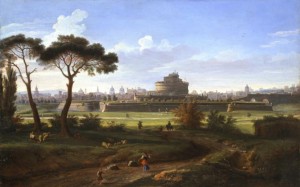 Studiolo, la revue d’histoire de l’art de l’Académie de France à Rome – Villa Médicis, consacre le dossier du volume 12 (parution en automne 2015) au thème Italie rêvée, Italie fantasmée. Sanctuaire des chefs-d’œuvre de l’Antiquité, cœur des innovations de la Renaissance, rivale de la France pendant le Grand siècle, l’Italie est devenue la patrie du Grand Tour, le chemin vers l’Orient, une terre d’accueil pour des artistes en quête de lumières prodigieuses, ou nostalgiques de la grandeur classique. Elle a été parcourue, rêvée ou fantasmée par nombre d’artistes. Son paysage . . . → En lire plus Studiolo, la revue d’histoire de l’art de l’Académie de France à Rome – Villa Médicis, consacre le dossier du volume 12 (parution en automne 2015) au thème Italie rêvée, Italie fantasmée. Sanctuaire des chefs-d’œuvre de l’Antiquité, cœur des innovations de la Renaissance, rivale de la France pendant le Grand siècle, l’Italie est devenue la patrie du Grand Tour, le chemin vers l’Orient, une terre d’accueil pour des artistes en quête de lumières prodigieuses, ou nostalgiques de la grandeur classique. Elle a été parcourue, rêvée ou fantasmée par nombre d’artistes. Son paysage . . . → En lire plus
Posté par Sarah Feron, le 17 décembre 2014;
- Date et lieu de la journée d'études : 09/01/2015, Paris, INHA
 Journée d’hommage organisée par Michel Laclotte, Chantal Georgel et Damien Bril (INHA) Journée d’hommage organisée par Michel Laclotte, Chantal Georgel et Damien Bril (INHA)
9 janvier 2015 – 9h30-17h
Galerie Colbert Salle Giorgio Vasari Institut national d’histoire de l’art entrée libre
Accès : 6 rue des Petits-Champs ou 2, rue Vivienne 75002 Paris
Au carrefour de l’histoire de l’art, de l’histoire et de l’anthropologie, les recherches d’Enrico Castelnuovo ont ouvert de fécondes perspectives en œuvrant au décloisonnement des disciplines et en initiant des approches novatrices. Ses premiers travaux, qui aboutirent à la publication d’une monographie sur l’œuvre de Matteo Giovannetti, lui ont aussi donné une conscience aiguë des enjeux patrimoniaux soulevés par la recherche, et très tôt il appela de ses . . . → En lire plus
Posté par Pascale Dubus, le 9 décembre 2014;
- Date limite : 25 janvier 2014
- Date et lieux des journées d'étude : 5-7 Mai 2015, Rome, Ecole française de Rome / Villa Medicis
 Le visiteur qui traverse l’Italie est aujourd’hui encore surpris par la profusion d’armoiries qui couvrent toujours les murs des palais et des monuments publics. Relativement préservé par les grandes campagnes de destruction d’armoiries qui ont marqué l’histoire de l’art héraldique européen, ce patrimoine est une des caractéristiques de la ville italienne. L’histoire de cette mise en signe de la ville, qui retient depuis longtemps l’attention des historiens et historiens de l’art, sans avoir pourtant suscité des travaux à la hauteur du corpus, a fait récemment l’objet de recherches spécifiques qui ont en partie renouvelé les approches et les connaissances, surtout pour l’Italie. Le visiteur qui traverse l’Italie est aujourd’hui encore surpris par la profusion d’armoiries qui couvrent toujours les murs des palais et des monuments publics. Relativement préservé par les grandes campagnes de destruction d’armoiries qui ont marqué l’histoire de l’art héraldique européen, ce patrimoine est une des caractéristiques de la ville italienne. L’histoire de cette mise en signe de la ville, qui retient depuis longtemps l’attention des historiens et historiens de l’art, sans avoir pourtant suscité des travaux à la hauteur du corpus, a fait récemment l’objet de recherches spécifiques qui ont en partie renouvelé les approches et les connaissances, surtout pour l’Italie.
Ces . . . → En lire plus
Posté par Damien Bril, le 4 décembre 2014;
- Date limite : 1er février 2015
- Date et lieu du colloque : 14-16 octobre 2015, Lille)
Ce colloque international, organisé à Lille du 14 au 16 octobre 2015 à l’occasion du bicentenaire de la fin du règne de Murat à Naples, vise à interroger les pratiques de gouvernement, les circulations économiques, diplomatiques, artistiques et culturelles impliquées par l’occupation française à Naples. Il se propose de reconsidérer le decennio francese dans une perspective franco-italienne et européenne.
 Argumentaire Argumentaire
L’Empire napoléonien n’a pas laissé qu’un héritage de guerres et de batailles. Dans les territoires conquis se sont élaborées de nouvelles expériences de gouvernement. Les règnes de Joseph Bonaparte (1806-1808) et de Joachim Murat (1808-1815) sur l’Italie du Sud ont ainsi confronté le royaume de Naples à une autre expérience . . . → En lire plus
Posté par Marianne Clerc, le 13 novembre 2014;
- Date et lieu de la journée d'étude : 5 décembre 2014, Grenoble, MSH-Alpes-Bibliothèque Droit-Lettres
 Cette journée d’étude fait suite à la première rencontre, qui eut lieu le 8 novembre 2013, organisée par le comité Lesdiguières, dans le cadre du programme « Le siècle des Lesdiguières ». Ces journées, co-établies par l’Université de Grenoble et le Conseil général de l’Isère : Archives départementales de l’Isère, Musée de la Révolution française-Domaine de Vizille, Musée Dauphinois, Musée de l’Ancien Evêché de Grenoble, service du Patrimoine culturel, sont autant de jalons destinés à dresser un état de la question et susciter des recherches nouvelles sur une famille majeure et pourtant mal connue de la grande noblesse française du XVIIe siècle, les Créquy-Lesdiguières. Cette journée d’étude fait suite à la première rencontre, qui eut lieu le 8 novembre 2013, organisée par le comité Lesdiguières, dans le cadre du programme « Le siècle des Lesdiguières ». Ces journées, co-établies par l’Université de Grenoble et le Conseil général de l’Isère : Archives départementales de l’Isère, Musée de la Révolution française-Domaine de Vizille, Musée Dauphinois, Musée de l’Ancien Evêché de Grenoble, service du Patrimoine culturel, sont autant de jalons destinés à dresser un état de la question et susciter des recherches nouvelles sur une famille majeure et pourtant mal connue de la grande noblesse française du XVIIe siècle, les Créquy-Lesdiguières.
L’implication des . . . → En lire plus
Posté par Damien Bril, le 12 novembre 2014;
- Date et lieu : 15 novembre 2014, Paris
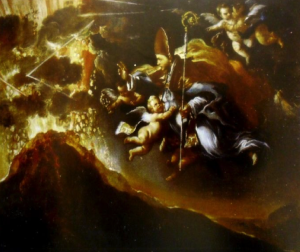 Soutenance de thèse en histoire de l’art de Karen Dutrech Soutenance de thèse en histoire de l’art de Karen Dutrech
Le Vésuve et saint Janvier. L’éruption de 1631 et ses représentations à Naples au XVIIe siècle
sous la direction de Michel Hochmann
samedi 15 novembre 2014
salle 117 à l’EPHE Le France à 14 H
190, avenue de France – 75013 Paris
en présence du jury composé de :
M. Michel Hochmann (directeur d’études à l’EPHE)
Mme Brigitte Marin (professeur à l’Université d’Aix-Marseille I et directrice d’études à l’EHESS)
Mme Claudine Vassas (directrice de recherches au CNRS, CAS/LISST Toulouse)
M. Andrea Zezza (professeur à l’Université Naples II Santa Maria Capua Vetere)
La soutenance sera suivie d’un . . . → En lire plus
Posté par Sébastien Bontemps, le 23 octobre 2014;
- Date limite : 23 novembre 2014
- Date de prise de fonction : : 1er janvier 2015

The Bibliotheca Hertziana, Max Planck Institute for Art History, announces a one-year postdoctoral fellowship, beginning 1 January 2015.
Candidates must be in possession of an upper level university degree (Ph.D.), good working knowledge of German, Italian, and English, and a research project proposal consistent with the aims and objectives of the Minerva research group. The recipients of these fellowships are also expected to participate with constancy in the activities of both the group and the Institute. Applications must include the following documentation:
– Curriculum vitae
– Photocopies of university diploma
– Description of the research project (max 2 pages)
– Summary of Doctoral dissertation (max 2 pages)
– List of publications (if any)
– Letter of recommendation from . . . → En lire plus
Posté par Pascale Dubus, le 9 octobre 2014;
- Date et lieu des rencontres : 10-11 octobre 2014, Paris, Institut culturel italien & Université Paris 1
 Journée jeunes chercheurs Société des Italianistes de l’Enseignement Français Université Paris 1 Panthéon-Sorbonne 10-11 octobre 2014 Journée jeunes chercheurs Société des Italianistes de l’Enseignement Français Université Paris 1 Panthéon-Sorbonne 10-11 octobre 2014
Vendredi 10 octobre 2014 Istituto Italiano di Cultura – 73 rue de Grenelle, 75007 Paris
9h45 : accueil des participants
10h00 : Première Session Président de séance : Flaviano Pisanelli (Université Paul Valéry – Montpellier 3)
– 10h : Anna Pia Filotico (Université Paris-Sorbonne – Paris 4), « Dante et le visibile parlare : staticité et mouvement dans les bas-reliefs du Purgatorio. La sculpture dans les cornici, clé de lecture de la cantica »
– 10:30 : Bérangère Neyrand, (Université Jean Moulin – Lyon 3) « De la narration à la narrativité : mettre en image le Decameron : du manuscrit autographe . . . → En lire plus
Posté par Pascale Dubus, le 2 octobre 2014;
- Date et lieu de la journée d'étude : Lundi 27 octobre 2014, Paris, INHA
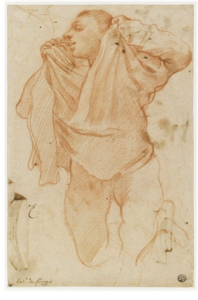 Après tant de colloques et expositions consacrés à la personnalité de Caravage il est temps de célébrer le rôle d’Annibale Carracci dans l’évolution de l’art moderne. La publication des catalogues récents des dessins du musée du Louvre par Catherine Loisel offre l’opportunité de reposer la question de l’actualité de l’art bolonais dans son ensemble. Avec le décor, actuellement en cours de restauration, de la Galerie du Palais Farnese, aujourd’hui siège de l’Ambassade de France à Rome, Annibale a ouvert la voie à un nouveau type de décor monumental. Peintre, dessinateur, graveur, il appartient à la grande école bolonaise avec son cousin Ludovico et son frère Agostino. Dans le cadre de . . . → En lire plus Après tant de colloques et expositions consacrés à la personnalité de Caravage il est temps de célébrer le rôle d’Annibale Carracci dans l’évolution de l’art moderne. La publication des catalogues récents des dessins du musée du Louvre par Catherine Loisel offre l’opportunité de reposer la question de l’actualité de l’art bolonais dans son ensemble. Avec le décor, actuellement en cours de restauration, de la Galerie du Palais Farnese, aujourd’hui siège de l’Ambassade de France à Rome, Annibale a ouvert la voie à un nouveau type de décor monumental. Peintre, dessinateur, graveur, il appartient à la grande école bolonaise avec son cousin Ludovico et son frère Agostino. Dans le cadre de . . . → En lire plus
Posté par Valentina Sapienza, le 20 septembre 2014;
- Date et lieu du colloque : 10-11 octobre 2014, Venise, Université Ca' Foscari.,
 La première phase du « Projet Garzoni. Apprentissage, travail et société, Venise, XVIe-XVIIIe siècles » arrive à sa conclusion. Les prochains 10 et 11 octobre, nous présentons à Venise (Université Ca’ Foscari – Archives d’Etat) les premiers résultats de la recherche, à l’occasion d’un colloque international qui verra la participation d’un grand nombre de spécialistes de Venise, de l’apprentissage, de l’histoire de l’art, du travail et de la société vénitienne, etc. etc. A cette occasion, nous nous ouvrons à une dimension comparative à la fois chronologique et géographique, avec l’espoir que ce dialogue fécond puisse faire progresser l’état de connaissances sur ce sujet si passionnant et actuel . . . → En lire plus La première phase du « Projet Garzoni. Apprentissage, travail et société, Venise, XVIe-XVIIIe siècles » arrive à sa conclusion. Les prochains 10 et 11 octobre, nous présentons à Venise (Université Ca’ Foscari – Archives d’Etat) les premiers résultats de la recherche, à l’occasion d’un colloque international qui verra la participation d’un grand nombre de spécialistes de Venise, de l’apprentissage, de l’histoire de l’art, du travail et de la société vénitienne, etc. etc. A cette occasion, nous nous ouvrons à une dimension comparative à la fois chronologique et géographique, avec l’espoir que ce dialogue fécond puisse faire progresser l’état de connaissances sur ce sujet si passionnant et actuel . . . → En lire plus
Posté par Sébastien Bontemps, le 15 septembre 2014;
- Date limite : 20 novembre 2014
- Date et lieu : 10 février 2015, Rome, Galeria Nazionale d'Art Moderna
12 février, Milan, galeria d'Arte Moderna, 10 février 2015, Rome, Galeria Nazionale d'Art Moderna
12 février, Milan, galeria d'Arte Moderna
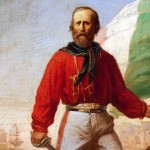 Arte in Italia 1860-1915 (Roma, 10-12 Feb 15) Roma, Milano, February 10 – 12, 2015 Arte in Italia 1860-1915 (Roma, 10-12 Feb 15) Roma, Milano, February 10 – 12, 2015
Deadline: Nov 20, 2014
TRA OLTRALPE E MEDITERRANEO. ARTE IN ITALIA 1860–1915
Giornate di studi Roma, Galleria Nazionale d’Arte Moderna – 10 febbraio 2015
Milano, Galleria d’Arte Moderna – 12 febbraio 2015
La grande sfida dell’arte italiana tra l’Unità e la Prima guerra mondiale è quella di creare uno stile nazionale competitivo e riconoscibile a livello europeo. Le due giornate di studi intendono indagare gli sviluppi artistici italiani nei loro rapporti internazionali, analizzati nell’ottica di uno sguardo incrociato tra Oltralpe e Mediterraneo che metta in rilievo il ruolo di cerniera giocato dall’Italia nell’Europa del tempo, sia dal punto di vista geografico, sia culturale. L’iniziativa . . . → En lire plus
Posté par Sébastien Bontemps, le 7 septembre 2014;
- Date limite : 2 octobre 2014
- Date de prise de fonction : Janvier 2015
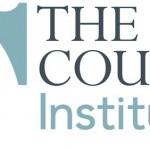 The Courtauld Institute of Art The Courtauld Institute of Art
Andrew W Mellon Foundation/ Research Forum Postdoctoral Fellowship (Mellon MA) 1 September 2015 to 31 August 2016 £29,191 per annum
The Courtauld Institute of Art Research Forum, with the support of the Andrew W. Mellon Foundation, is offering a fellowship to an early career researcher in the art of the Italian Renaissance. An interest in the relationship between art and literature is desirable. This fellowship will give the Fellow the opportunity to pursue a research project while gaining teaching experience in a research environment and participating in the launch of an interdisciplinary M.A. course. In addition to undertaking research and playing an active role in the Research Forum, the Fellow is expected to teach one . . . → En lire plus
Posté par Pascale Dubus, le 17 juin 2014;
- Date limite : 15 août 2014
- Date et lieu du colloque : 7 mai 2015, Italie, Florence
 In recent years, there has been an outpouring of new archival evidence about the life and artistic practices of Artemisia Gentileschi, as well as new proposed additions to her oeuvre. To provide a forum for the presentation and consideration of new work on the artist, this two-day conference will be held in Florence, Italy, a major site of recent conservation and archival research on Artemisia. We invite papers that offer new documentary information, advance interpretations of recent archival findings, present new readings of particular paintings, or address issues or problems raised by recent attributions. Such issues might include connoisseurship methods and questions, material . . . → En lire plus In recent years, there has been an outpouring of new archival evidence about the life and artistic practices of Artemisia Gentileschi, as well as new proposed additions to her oeuvre. To provide a forum for the presentation and consideration of new work on the artist, this two-day conference will be held in Florence, Italy, a major site of recent conservation and archival research on Artemisia. We invite papers that offer new documentary information, advance interpretations of recent archival findings, present new readings of particular paintings, or address issues or problems raised by recent attributions. Such issues might include connoisseurship methods and questions, material . . . → En lire plus
Posté par Pascale Dubus, le 22 mai 2014;
- Date limite : 15 juin 2014
- Date et lieu du colloque : 25-27 septembre 2014, Vérone
 On the occasion of the exhibition Paolo Veronese L’illusione della realtà (Verona, Palazzo della Gran Guardia, 5th July – 5th October 2014, www.mostraveronese.it ), curated by Paola Marini and Bernard Aikema, an international conference will take place on September 25-27 to discuss the new points of view on Paolo Veronese as emerged during the two monographic exhibitions in London and Verona. A poster session will run simultaneously to the conference. Here specific research projects (around 10 mins long) will be presented and discussed. We invite early career scholars, post graduate students, and PhD candidates to send a proposal (English or Italian), a 150-word abstract, . . . → En lire plus
Posté par Zinaïda Polimenova, le 20 mai 2014;
23 mai 2014, 9h30 – 17h00
Galerie Colbert, salle Jullian
Organisée par Emilia Héry et Maddalena Tibertelli de Pisis, centre de recherche HiCSA (Paris 1)
Programme 9h30 / Accueil des participants 9h45 / Ouverture par Emilia Héry et Maddalena Tibertelli de Pisis, doctorantes à l’université Paris 1 Panthéon-Sorbonne, Centre de recherche HiCSA
Président de séance Gilles Pécout, professeur à l’ENS et directeur d’études à l’EPHE
10h00 / Paolo Rusconi, professeur associé d’histoire de l’art contemporain, Université de Milan “Smorfie meschine”. Iconographies du marchand Pietro Maria Bardi dans l’Italie fasciste 10h30 / Maddalena Tibertelli de Pisis, HiCSA Le cas de Monsieur Sarmiento et les artistes italiens résidant à Paris dans les années trente 11h00 / Myriam Métayer, maître de conférences en histoire de l’art contemporain, université Bordeaux . . . → En lire plus
Posté par Pascale Dubus, le 14 mai 2014;
- Date limite : 15 juin 2014
- Date de la journée d'étude : 10 octobre 2014
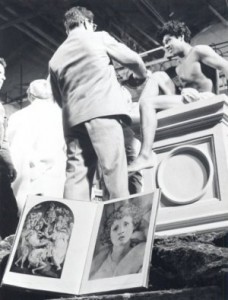 Les arts plastiques canonisés par Giorgio Vasari, « le tre arti del disegno », ont longtemps donné lieu à des commentaires codifiés dans des formes variées (vies, salons, critiques d’art) qu’on ne cesse d’explorer et qui ne sont pas obsolètes. Toutefois les nouveaux arts du XIXème et du XXème siècle, la danse, la photographie, ensuite l’apparition de ceux qu’on a appelés le septième (cinéma), le huitième (télévision), le neuvième art (bande dessinée), les hybridations, les nombreuses relectures, transcriptions, adaptations, ont complexifié le discours sur l’art ou les arts. Les arts plastiques canonisés par Giorgio Vasari, « le tre arti del disegno », ont longtemps donné lieu à des commentaires codifiés dans des formes variées (vies, salons, critiques d’art) qu’on ne cesse d’explorer et qui ne sont pas obsolètes. Toutefois les nouveaux arts du XIXème et du XXème siècle, la danse, la photographie, ensuite l’apparition de ceux qu’on a appelés le septième (cinéma), le huitième (télévision), le neuvième art (bande dessinée), les hybridations, les nombreuses relectures, transcriptions, adaptations, ont complexifié le discours sur l’art ou les arts.
Le cinéma italien naît sous le signe de cette hybridation. L’opéra grandit à la croisée de la . . . → En lire plus
|
Équipe Rédacteur en chef : Olivier Bonfait.
Rédacteurs : Elliot Adam (Moyen Age) ; Nicolas Ballet (XX-XXIe siècles) ; Matthieu Fantoni (musées) ; Antonella Fenech Kroke (bourses) ; Vladimir Nestorov (Lettre mensuelle)
Administrateur web : Matthieu Lett.
ancien éditeur : Pascale Dubus
anciens rédacteurs : Gautier Anceau, Sébastien Bontemps, Damien Bril ; Sébastien Chauffour ; Ludovic Jouvet ; Aude Prigot
|
 La Villa I Tatti de Florence propose la bourse David et Julie Tobey d’une durée de trois mois pour encourager la recherche sur les dessins, les gravures et les manuscrits illustrés de la Renaissance italienne.
La Villa I Tatti de Florence propose la bourse David et Julie Tobey d’une durée de trois mois pour encourager la recherche sur les dessins, les gravures et les manuscrits illustrés de la Renaissance italienne. 
















